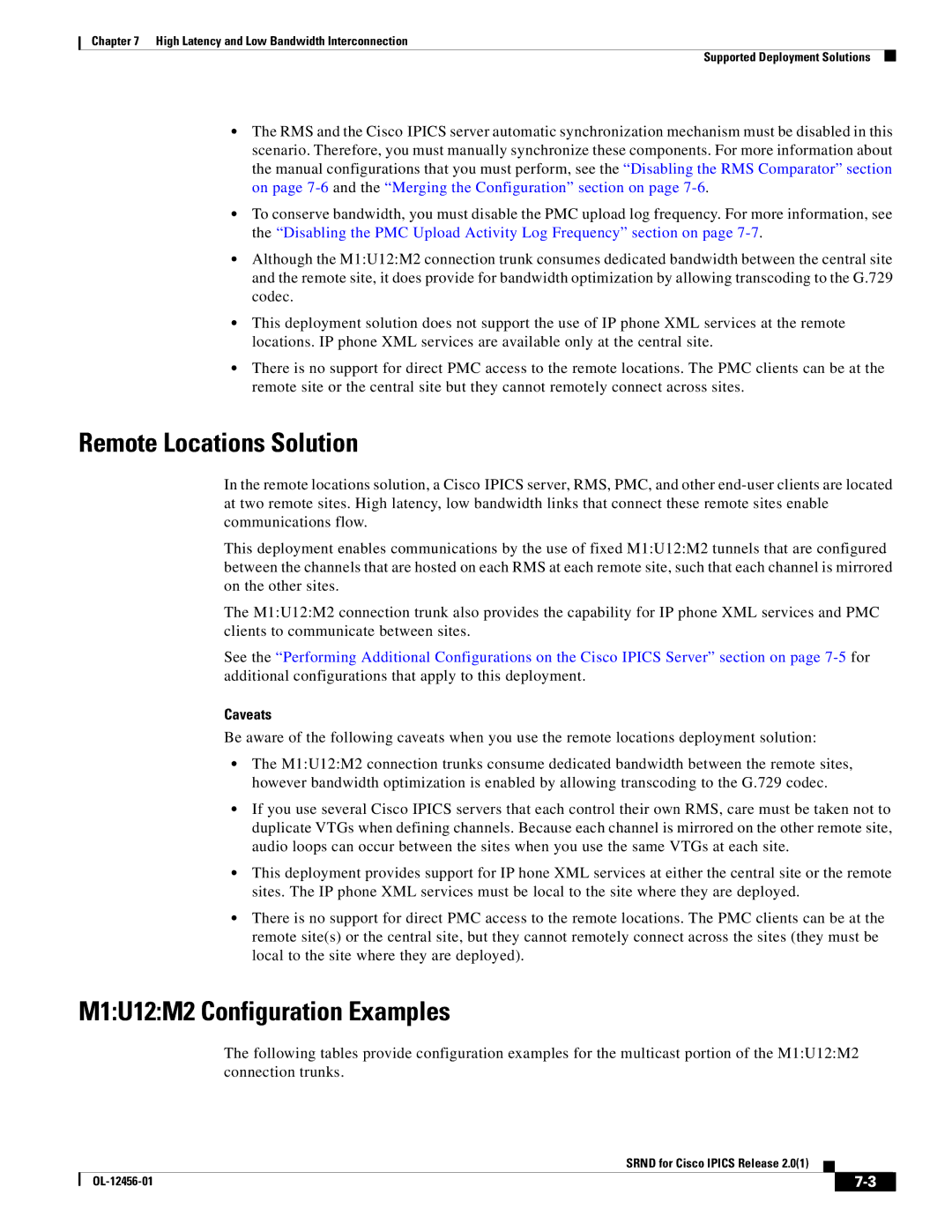
Chapter 7 High Latency and Low Bandwidth Interconnection
Supported Deployment Solutions
•The RMS and the Cisco IPICS server automatic synchronization mechanism must be disabled in this scenario. Therefore, you must manually synchronize these components. For more information about the manual configurations that you must perform, see the “Disabling the RMS Comparator” section on page
•To conserve bandwidth, you must disable the PMC upload log frequency. For more information, see the “Disabling the PMC Upload Activity Log Frequency” section on page
•Although the M1:U12:M2 connection trunk consumes dedicated bandwidth between the central site and the remote site, it does provide for bandwidth optimization by allowing transcoding to the G.729 codec.
•This deployment solution does not support the use of IP phone XML services at the remote locations. IP phone XML services are available only at the central site.
•There is no support for direct PMC access to the remote locations. The PMC clients can be at the remote site or the central site but they cannot remotely connect across sites.
Remote Locations Solution
In the remote locations solution, a Cisco IPICS server, RMS, PMC, and other
This deployment enables communications by the use of fixed M1:U12:M2 tunnels that are configured between the channels that are hosted on each RMS at each remote site, such that each channel is mirrored on the other sites.
The M1:U12:M2 connection trunk also provides the capability for IP phone XML services and PMC clients to communicate between sites.
See the “Performing Additional Configurations on the Cisco IPICS Server” section on page
Caveats
Be aware of the following caveats when you use the remote locations deployment solution:
•The M1:U12:M2 connection trunks consume dedicated bandwidth between the remote sites, however bandwidth optimization is enabled by allowing transcoding to the G.729 codec.
•If you use several Cisco IPICS servers that each control their own RMS, care must be taken not to duplicate VTGs when defining channels. Because each channel is mirrored on the other remote site, audio loops can occur between the sites when you use the same VTGs at each site.
•This deployment provides support for IP hone XML services at either the central site or the remote sites. The IP phone XML services must be local to the site where they are deployed.
•There is no support for direct PMC access to the remote locations. The PMC clients can be at the remote site(s) or the central site, but they cannot remotely connect across the sites (they must be local to the site where they are deployed).
M1:U12:M2 Configuration Examples
The following tables provide configuration examples for the multicast portion of the M1:U12:M2 connection trunks.
SRND for Cisco IPICS Release 2.0(1)
|
| ||
|
|
